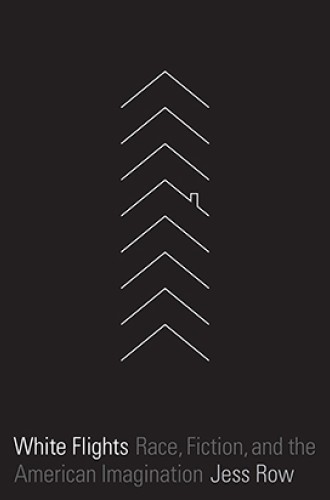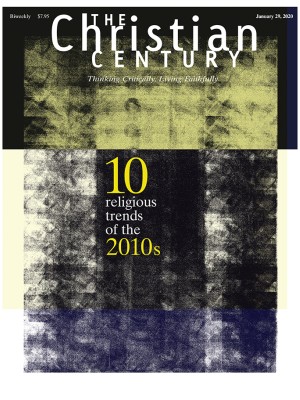Examining whiteness through “reparative writing”
Jess Row asks what happens when alienation turns to rage.
In Playing in the Dark: Whiteness and the Literary Imagination, Toni Morrison points to the strange silence about whiteness in American literature. Whiteness, she writes, is “mute, meaningless, unfathomable, pointless, frozen, veiled, curtained, dreaded, senseless, implacable. Or so our writers seem to say.” What might it look like to interrogate this muteness, to pull back the curtain? Jess Row, a novelist and essayist, makes a serious attempt to answer her charge.
Row calls what he is attempting “reparative writing.” He uses the term tentatively. This is not a manifesto. Reparative writing, he says, “can’t exist until it exists in a community, as a process of dialogue and exchange.” Still he wants his work to have a spirit of reparation, offering “tangible resources to people who were (and/or still are) denied them.” He has dedicated the proceeds of the book to Racing Magpie, a Native-owned arts collective in Rapid City, South Dakota, on land that belongs to the Lakota by treaty, land that his ancestors were directly complicit in taking.
Read our latest issue or browse back issues.
In a series of interconnected essays, Row demonstrates one form reparative writing might take. He begins with an understanding of whiteness as fundamentally about power and the policing of power. It uses shame and violence to create and enforce boundaries that serve power. Once boundaries have been established, a great deal of energy goes into both maintaining them and pretending that they aren’t there. In the realm of literature, this creates odd distortions and various kinds of “white flights.” It also leads to a deep underlying and unacknowledged sadness that is a true legacy of whiteness—a sense of isolation and alienation among those who are white. This alienation can give way to rage and violence.
Row explores the famous relationship between the white fiction writer Raymond Carver, and Gordon Lish, his white editor. Lish edited Carver’s stories into lean, hard, “luminous” works of art, taking out of Carver’s work the soft, human part. He often eliminated characters’ names and descriptions of their bodies. Human emotion was likewise excised out of fear that it might be sentimental. Lish, who was an outsized influence on a generation of white writers, believed that if writers could get beyond the “messy details of our lives,” as Row puts it, including race, gender, ethnicity, and nationality, they could find the truth.
White fiction then became an exercise in self-policing. To explore this insight, Row puts his own body on the line in explicit ways. He describes himself as a short white guy who has always struggled with his weight. When commentators told him his work “needed to be put on a diet,” he writes, he couldn’t help feeling the implications for his own body—a body that, like his writing, needed to be better policed.
Another phenomenon in white fiction is its tendency to set itself in environments without racial difference. Row argues that this can be understood in part historically. At the same moment that white people were fleeing racially diverse environments (neighborhoods, churches, workplaces), white literature was making the same move. He uses Anne Tyler as an example. She sets her characters in a white section of Baltimore and largely ignores the multiracial dimensions of the city. By eliminating racial difference, authors like Tyler make their white characters into individuals who are no more than the sum total of their quirks.
Row also criticizes Marilynne Robinson for being unable to imagine a world beyond the boundaries that whiteness creates. He points to a scene in Home that occurs after Jack Boughton has returned to Gilead without his interracial family. After recognizing that he cannot bring them to Gilead, he leaves. Later his wife and son arrive, looking for him. In the final pages of the novel, Jack’s sister Glory stands on the porch and watches his family leave. She cannot imagine Jack and his mixed-race family coming back to take over the family home and make themselves comfortable within it. And so Glory ends up alone.
Unlike Row, I don’t read this scene as a failure of Robinson’s imagination but rather as her acknowledgment of the social reality with which the characters are grappling. Home is deeply informed by the history of the Civil War and the civil rights movement in Iowa. This racial history, in fact, is the fuel that drives the narrative.
Row wonders: “What would it mean . . . for a white American writer . . . to write as if love, rather than shame, were the final standard,” writing “non-self-protectively, but rather expansively, out of joy rather than terror, at an expanding universe?” I would argue that in Home Robinson is writing out of a love that sees and names what limits her characters. Imagining all the characters together on the porch would be utopian, not expansive.
But Row is right that Glory is like many other characters in white fiction who end up on the outside, alone. Buried underneath the shame of whiteness is a deep sadness at having been cut off from the rest of the human race. Whenever this sadness is recognized and expressed, Row says, it might be called a form of “white blues.”
Another common response to this sadness, Row argues, is violence. Often in white people’s art, there is a catastrophic impulse. We see it in Sylvester Stallone movies of the 1980s and ’90s, in which a white man ends up bloodied and alone after having killed everyone around him. A whole genre of action movies is devoted to this impulse, with various levels and forms of catastrophe. This dynamic is evident also in the fiction of Cormac McCarthy, whose apocalyptic landscapes tend to create characters who through violence become more and more isolated. White people, Row argues, do not know how to “let white supremacy die without feeling that they are dying.”
When the curtain is pulled back on whiteness, what we find is not pretty. We need fiction that helps us interrogate these moves toward isolation and violence that have become culturally ritualized.








